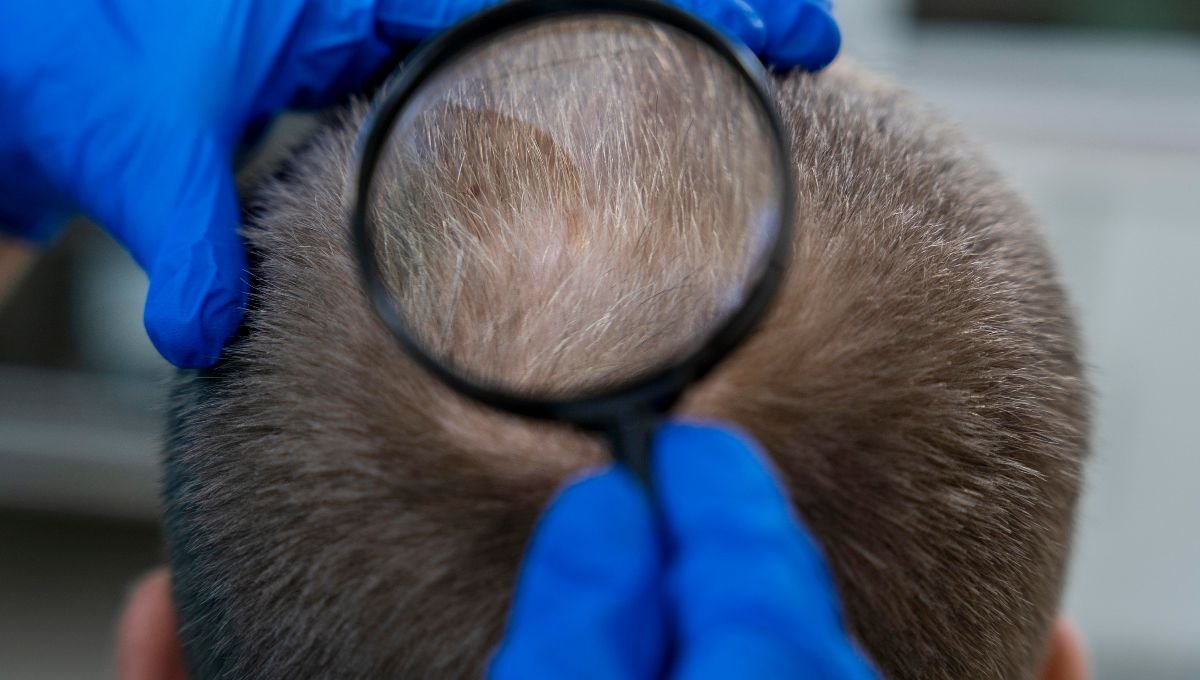A normal, healthy man loses 50-100 hairs every day. Some hair loss is treatable with meditation and therapy. A poor lifestyle, pollution, and stress can cause permanent hair loss. Finding the root cause of hair loss might be hard. A hair specialist helps you and does tests, like blood tests, pull tests, and scalp biopsies.
Hair loss can be triggered by many factors and functional systems. Some common causes of hair loss.
- Androgenetic alopecia: It is a genetic disorder in which a male or female loses hair after reaching a certain age. But some factors, like a poor diet and lifestyle, may affect the speed of alopecia.
- Hormonal imbalance: Hormonal imbalances are a major cause of permanent hair loss. DHT and thyroid hormonal disorders can trigger hair loss. It is seen that after treating the hormonal imbalance. Hair loss will stop, but the losses will never grow back because the hair follicles are shrunk and new hair cannot be grown from the hair follicle.
- Heavy medication doses: Some drugs, like chemotherapy and antidepressants, can cause temporary hair loss. It usually reverses after reducing or stopping the meds.
- Autoimmunity systems: Sometimes, our immune system releases excessive cortisol hormones to manage stress, which affects the hair follicles and causes sudden hair shedding.
Hair growth cycles
The hair growth cycle is a process that consists of four different phases of hair growth.
Anagen stage: It is the growth stage of hair, and it is also considered the longest phase of the hair cycle, lasting 6 to 7 years. During this stage, new hair cells are produced in the hair bulb.
Catagen stage: During this phase, hair growth is slowed down and hair starts detaching from the hair follicles. This stage is also known as a transition stage because hair is going from the anagen stage to the telogen stage. This phase lasts only 3 to 4 weeks.
Telogen stage: In this stage, you will face hair thinning and hair breakage because your hair growth has completely stopped, and hair is now detached from the hair follicles. But it does not fall suddenly after detaching from the hair follicles.
Exogen stage: During this stage, your hair shedding starts, and new hair forms in hair follicles in place of previous hairs. This phase lasts for 2 to 3 months.
The hair loss causes that we discussed earlier are attacking the anagen stage and trying to shorten the period of hair growth by shrinking the hair follicles. Also, causes like alopecia and hormonal disorders increase the telogen stage, which leads to hair thinning, hair loss, baldness, and hairline receding.
Hair transplant procedure
A hair transplant is a procedure in which a hair follicle is extracted from the donor area and planted into the bald area. You can consult with an experienced dermatologist for a hair transplant. Normally, the back and sides of the head are considered good donor areas.
3 types of hair transplantation are commonly practiced in India.
Follicular unit transplantation (FUT): In the FUT technique, new hair follicles are planted as groups of 1-4 hair follicles into the scalp. This technique’s success rate is 85% to 90%. This technique has some side effects, such as scarring, redness, infection, and bleeding.
Follicular unit extraction (FUE): In the FUE technique, new hair follicles are extracted and planted as individual hair follicles into the scalp. This technique has a better success rate of 95%-98% compared to FUT. This technique has very few chances of side effects, such as bleeding, scarring, and infection.
Follicular unit strip surgery (FUSS): In the FUSS technique, new hair follicles are extracted from a strip of scalp skin and planted in the bald area. This technique is very famous for its natural results. This technique also has a high success rate compared to FUT. However, it is not the same as FUE, and this technique also has a higher chance of causing scarring.
Success Formula Behind Hair Transplants
A hair transplant helps to restore the permanent hair loss caused by it.
Hormonal imbalance: In a hair transplant, the dead hair follicles are replaced by new hair follicles, which will reduce the effect of DHT hormones. After the hair transplant, medicine like Finasteride is used to reduce the DHT level in the body, and minoxidil helps to supply blood to hair follicles. Finasteride helps to balance the hormones. People also use Finasteride without hair transplants. If they are in stage 1 or stage 2 of hair loss.
Androgenetic alopecia: this type of alopecia is caused by genetics. It means your hair follows the same pattern as your parents. Hair transplants with medication like minoxidil and finasteride slow down the hair loss pattern. But it would not affect the root cause of your hair loss.
Accidental injury or burn: sometimes, the scalp is damaged by accident or scalp burn. Which causes permanent hair loss. Normally, our scalp can heal itself from some minor injuries. But if the hair scalp is damaged by a major accident. In this situation, with the help of a hair transplant, you can relocate your healthy hair scalp into a bald one. This new scalp will start regrowing like natural hair after 1 year.
Conclusion
Hair loss is a very complex condition that is caused by many factors like androgenetic alopecia, hormonal imbalance, diseases, and the use of heavy medication. These factors affect the growth phase of the hair growth cycle and make this phase shorten. It will cause temporary or permanent hair loss. If you live in NCR and neighboring cities like Faridabad and ballabhgarh. You will find the best dermatologist for your hair replacement treatment in Gurgaon. A dermatologist helps you to treat permanent hair loss like androgenetic alopecia, hormonal imbalance, and accidental injury or burn.

